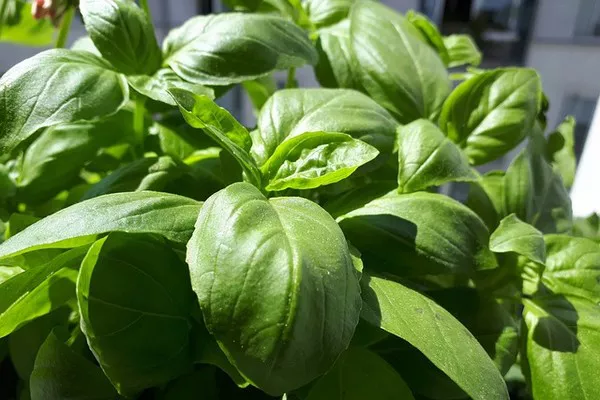Basil, with its fragrant leaves and culinary versatility, is a beloved herb that finds its way into many kitchens around the world. Whether you’re a seasoned gardener or a novice, growing basil can be a rewarding and relatively straightforward experience. In this comprehensive guide, we will explore the steps to successfully grow basil plants, from selecting the right variety to providing the ideal growing conditions and maintaining your basil for a bountiful harvest.
Choosing the Right Basil Variety
Before you start planting basil, it’s essential to select the right variety for your needs. Basil comes in numerous cultivars, each with its unique flavor profile and growth habits. Some popular varieties include:
Sweet Basil (Ocimum basilicum): This is the most common type, known for its classic basil flavor, making it perfect for various dishes, especially Italian cuisine.
Genovese Basil: A specific variety of sweet basil, Genovese basil boasts large, aromatic leaves and a robust flavor. It’s the classic choice for making pesto.
Thai Basil (Ocimum basilicum var. thyrsiflorum): With a slightly spicy, licorice-like flavor, Thai basil is a staple in Thai and Southeast Asian cooking.
Purple Basil: As the name suggests, this basil variety has deep purple leaves and a mild, sweet flavor. It’s not only a culinary delight but also adds visual appeal to your garden.
Lemon Basil (Ocimum basilicum var. citriodorum): True to its name, lemon basil imparts a citrusy twist to dishes, making it a unique addition to salads and desserts.
Holy Basil (Ocimum sanctum): Also known as Tulsi in India, holy basil is revered for its medicinal properties and is commonly used in herbal teas and traditional remedies.
Selecting a suitable basil variety based on your culinary preferences and intended use is the first step towards a successful harvest.
Planting Basil: Getting Started
Once you’ve chosen the right basil variety, it’s time to start planting. Here’s a step-by-step guide to getting your basil off to a healthy start:
Timing: Basil is a warm-weather herb that thrives in temperatures between 70°F to 90°F (21°C to 32°C). Therefore, it’s best to plant basil after the last frost in the spring when the soil has warmed up.
Location: Basil plants require plenty of sunlight, ideally at least 6-8 hours per day. Choose a location in your garden or on your balcony that receives adequate sunlight. If you’re growing basil indoors, place it near a sunny window or provide supplemental grow lights.
Soil Preparation: Basil prefers well-draining soil with a slightly acidic to neutral pH level (6.0-7.0). Work organic matter like compost into the soil to improve drainage and fertility.
Spacing: Depending on the variety, space your basil plants 12 to 18 inches apart. This ensures good air circulation and prevents overcrowding, which can lead to disease.
Planting Depth: Dig small holes about 1/4 inch deep and place the basil seeds or seedlings into the holes. If using seeds, thin the seedlings to the desired spacing once they are a few inches tall.
Caring for Your Basil Plants
Successful basil cultivation requires ongoing care and attention to ensure optimal growth and flavor. Here are some essential care tips:
Watering: Basil prefers consistently moist but not waterlogged soil. Water your basil plants regularly, aiming to keep the soil evenly moist. Watering in the morning allows the foliage to dry before nighttime, reducing the risk of fungal diseases.
Mulching: Applying a layer of organic mulch around your basil plants helps retain moisture, regulate soil temperature, and suppress weeds. Mulch also prevents soil from splashing onto the leaves, reducing the risk of soil-borne diseases.
Fertilizing: Basil is a relatively light feeder, but it benefits from occasional feeding. Apply a balanced, water-soluble fertilizer every 4-6 weeks during the growing season. Avoid excessive nitrogen, as it can lead to lush foliage at the expense of flavor.
Pruning and Pinching: Regularly pinch back the tips of your basil plants to encourage bushy growth and prevent them from becoming leggy. Pinch just above a set of leaves, which will encourage new growth.
Disease and Pest Management: Keep an eye out for common basil pests like aphids and whiteflies. Neem oil or insecticidal soap can be used to deter these pests. Additionally, good air circulation and proper spacing can help prevent fungal diseases.
Harvesting: Harvest basil leaves as needed throughout the growing season, starting once the plant has reached a sufficient size. Pinch or snip the leaves just above a set of leaves or nodes to encourage continuous growth. Remember not to remove more than one-third of the plant at a time.
Companion Planting: Basil can be an excellent companion plant for tomatoes, peppers, and other vegetables, as it may help deter certain pests and improve their flavor.
Overwintering
Basil
Basil is an annual herb, but with some care, you can extend its life and enjoy fresh basil throughout the winter. Here’s how to overwinter basil:
Harvest Heavily: Before the first frost of the season, harvest most of your basil leaves. You can dry or freeze them for later use.
Prune and Transplant: Cut back your basil plant to a few inches above the soil line. Dig up the root ball and transplant it into a pot. Place the pot in a sunny indoor location or a greenhouse.
Water Sparingly: Overwintered basil requires less water than outdoor plants. Allow the soil to dry slightly between waterings to prevent root rot.
Conclusion
Growing basil can be a satisfying and delicious addition to your gardening repertoire. By selecting the right variety, providing the ideal growing conditions, and practicing proper care, you can enjoy a bountiful harvest of fresh basil leaves throughout the growing season. Whether you use it in culinary creations or for its aromatic and aesthetic appeal, basil is a versatile and rewarding herb to cultivate. So, roll up your sleeves, get your hands dirty, and start growing your own basil garden today!


